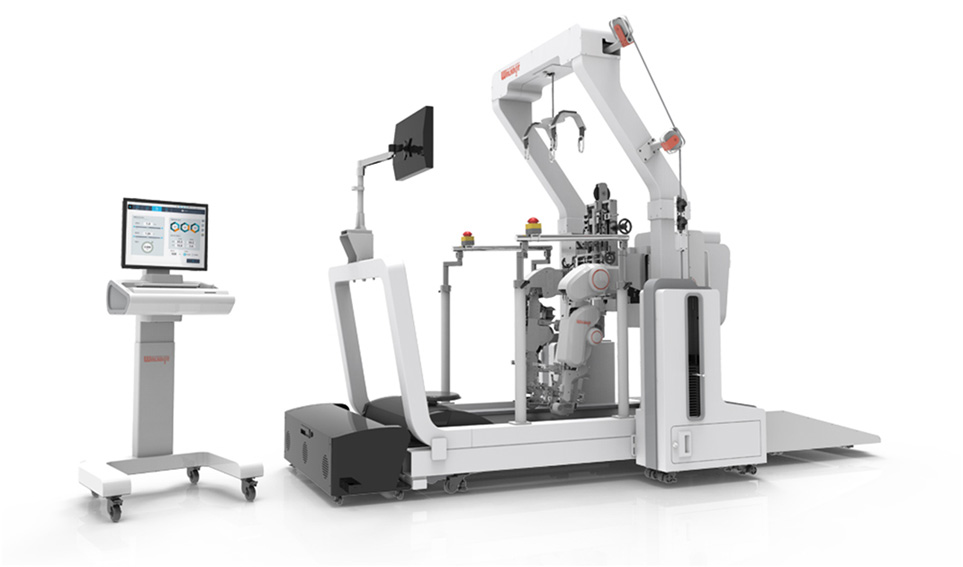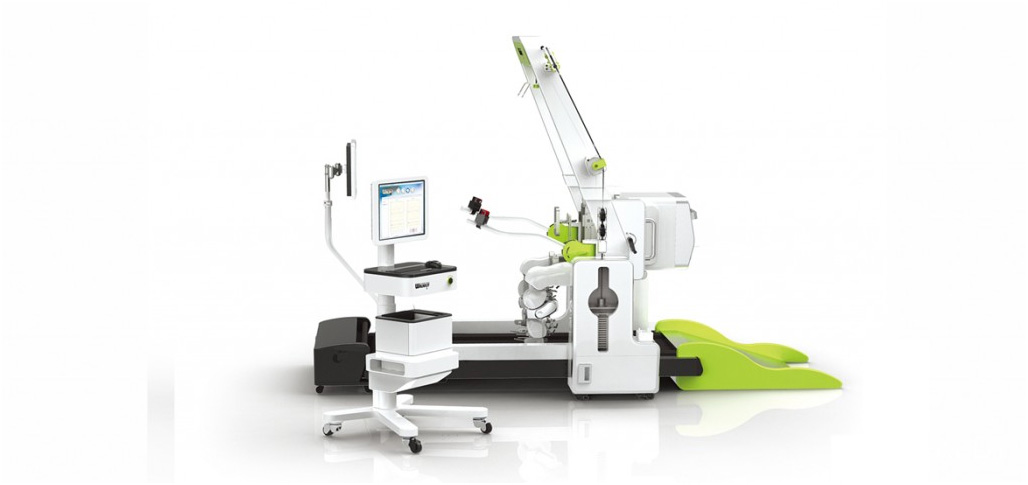Clinical Research
Thank you for visiting the website of P&S Mechanics Co., Ltd.
Thank you for visiting the website of P&S Mechanics Co., Ltd.
Exoskeleton gait training system were found to have excellent efficiency in locomotor recovery in the diseases related to the neuro rehabilitation, such as stroke, especially when combined with conventional physical therapy rather than conventional therapy alone.
Compared to the conventional therapy, the robotic gait training system, generally, provides, in 1 training session, at least 1000 steps which is 10 times more than conventional therapy.
Also, the robot system requires 1 therapist whereas conventional therapy need more than 1 therapist. Lastly, patients’ training pattern is reproducible with robot system, so patients can learn the gait with correct way. On the other hand, the result of conventional therapy is dependent on therapist’s personal skills.
There is increasing evidence that repeated practice, intensive training and task specific exercises result in better gait ehabilitation. The Exoskeleton gait training system is one of the best way to enable these three and encourage of neuroplasticity.
This exoskeleton gait training system is designed purposely for people who are having gait disturbance due to joint or muscular force problem, to provide a walking experience for paraplegic patients, and to provide recovery exercises for stroke and spinal cord injury. Not only that but this walking device is usually needed in university hospitals, general hospitals, rehabilitation hospitals, geriatric hospitals, industrial accident hospitals, and elderly welfare facilities.

There are at least three types of Exoskeleton gait training system. The first one is the device for re-walking for perfection. This walking device is a kind of rehabilitation medical device that is robot-assisted gait training system for locomotion-impaired patients. This device is applicable for people who suffer from stroke, spinal cord injury or SCI, brain tumors, multiple sclerosis, cerebral palsy, and many more. This walking will also provide a natural and accurate gait pattern for an individual by using hip or knee or ankle joint drive motor. That way, it will give fast recovery after the training.
This walking device is designed as a device with interactive, functional, strengthening, motivating, natural, and cost-effective locomotor system features. It is designed for adults with neurological or musculoskeletal impairments who want to perfect their walk.
The second type of Exoskeleton gait training system. is the device for children’s treatment. This walking device is designed purposely for children whose height from 86cm to 148cm of young patients. Different from the adult, the stiffness and the resistance in the children case are much harder in most cases. Some of the children do not even have experience of walking after birth which is why the efficacy of the treatment is much lower in spite of longer training time. In order to get better results, this second type of walking device was developed with the ankle drive motor in order to give gait balance and correct pattern. This walking device also provides relevant clinical information that is related to locomotion. The information includes data in tiffness that is associated with spasticity or joint contracture, spatiotemporal data, hip, knee, ankle kinematics, and kinetic force data during locomotion training. In addition, the playground is designed as per children’s eye level to minimize the difficulties and unfamiliarity of when they first use the equipment. Not only that but the age-appropriate augmented reality program is integrated into the system to maximize the interactive participation and motivation for the children.
The third type of Exoskeleton gait training system. is the device for the gait training system. This walking device is a kind of robot-assisted gait training rehabilitation system which is compatible for adults and pediatric patients with neurological or musculoskeletal impairments. The dual robot orthoses are compatible with the adult and pediatric and also with various optional that helps locomotor training to maximize the training effect
